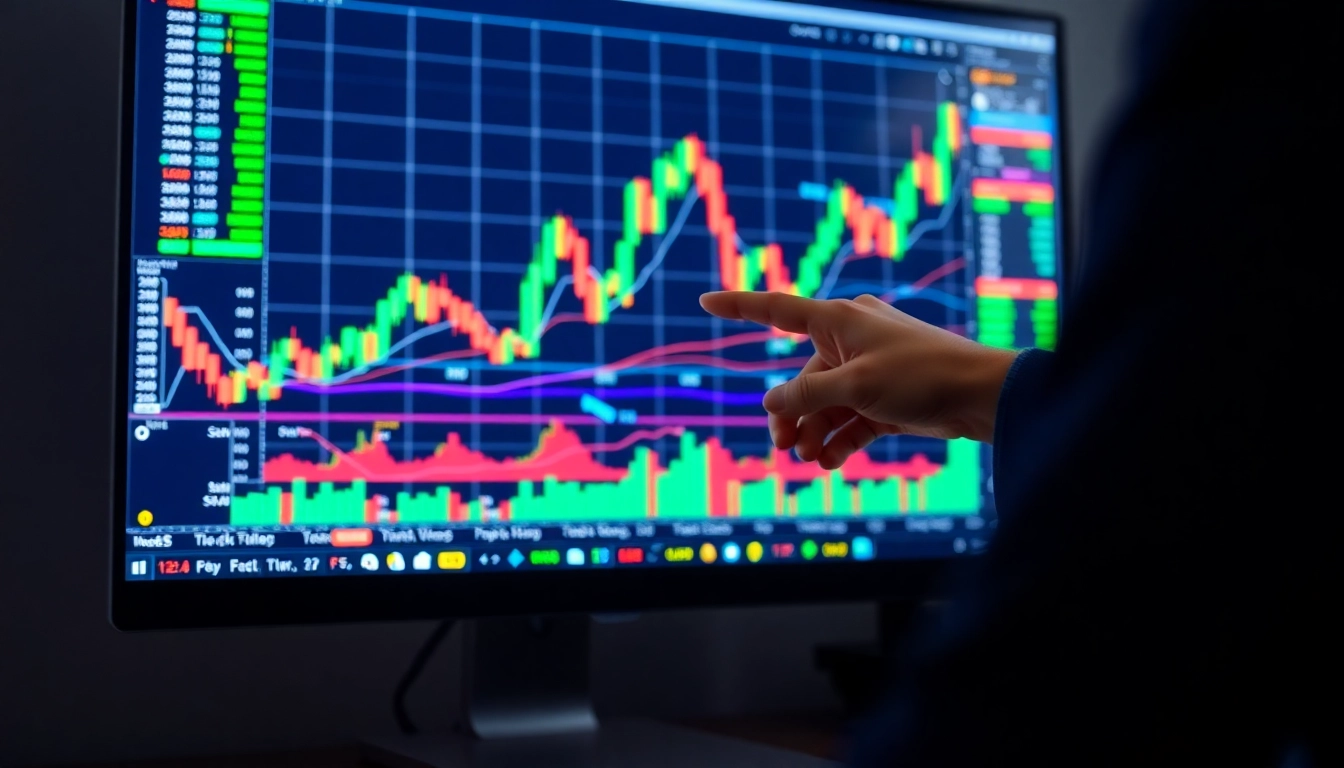
Introduction to Trading View: Understanding Its Role in Modern Trading
In the rapidly evolving landscape of financial markets, traders and investors seek reliable tools that offer real-time data, advanced analysis, and robust community insights. Among these tools, trading view has emerged as a premier platform, combining sophisticated charting capabilities with social networking for market enthusiasts worldwide. Its versatility caters to beginners just starting their trading journey as well as experienced traders who require complex analysis and automation functionalities. This comprehensive guide explores how TradingView operates, its key features, setup procedures, advanced techniques, best practices, and methods to measure and improve your trading performance effectively.
Getting Started with Trading View: Setup and Customization
Creating an Account and Navigating the Platform
Getting started with TradingView is straightforward. Begin by signing up on their official website, where you can choose a free or paid plan based on your trading needs. The registration process involves providing basic information and verifying your email. Once logged in, traders are greeted with a customizable dashboard featuring various charts, watchlists, and news feeds. The interface is intuitive, allowing users to swiftly navigate between different markets, timeframes, and analysis tools. For enhanced functionality, integrating your preferred brokerage account or trading platform is seamless, offering a unified trading experience.
Customizing Charts and Watchlists for Your Trading Style
One of TradingView’s strengths is its high level of customization. Traders can create multiple custom chart layouts tailored to specific strategies or market segments. With a simple drag-and-drop interface, you can add or remove elements such as indicators, drawing tools, and annotations. Watchlists can be personalized to include stocks, cryptocurrencies, forex pairs, or commodities, allowing quick access to their live data. Syncing these elements across devices ensures consistency whether you’re on desktop, tablet, or mobile. Customization enhances efficiency, enabling traders to adapt the platform seamlessly to their unique trading style.
Utilizing Alerts and Indicators to Monitor Market Movements
Alerts are critical for timely decision-making, and TradingView offers a versatile alert system that can notify you via pop-ups, emails, or SMS. You can set alerts based on price levels, indicator crossings, or even custom scripts. Indicators like Moving Averages, RSI, MACD, Bollinger Bands, and novel community scripts help identify market trends and entry/exit points. Combining these tools with alerts ensures traders stay informed about significant price movements without constantly monitoring screens, thereby optimizing time and focus.
Advanced Techniques Using Trading View for Market Analysis
Applying Technical Analysis and Drawing Tools
Technical analysis (TA) is fundamental in modern trading, and TradingView’s comprehensive suite of drawing tools elevates this process. Traders can plot trend lines, Fibonacci retracements, channels, and patterns like head and shoulders directly on charts. These visual aids facilitate identification of support and resistance levels, trend continuations, or reversals. The platform’s real-time updates ensure analysis is timely, and the ability to save templates speeds up repetitive tasks. Mastery of TA combined with precise drawings allows for more accurate predictions and strategic planning.
Leveraging Community Ideas and Shared Scripts
TradingView’s thriving community is a unique feature that empowers traders through shared insights and strategies. Users can publish their trading ideas, analyze charts, and comment on others’ assessments. This collective intelligence accelerates learning and keeps traders updated on novel approaches. Additionally, the platform hosts a vast library of user-created scripts and indicators via Pine Script, TradingView’s scripting language. Utilizing these shared tools allows traders to customize analyses further, develop automated strategies, or adapt premium indicators without designing from scratch. Engaging actively in community discussions also fosters a broader understanding of market sentiment and emerging trends.
Integrating Trading View with Other Trading Platforms
While TradingView excels as a standalone analysis tool, advanced traders often integrate it with brokerage platforms or trading algorithms. API integrations or brokerage-specific plugins enable direct execution from charts or signals generated by TradingView. This integration streamlines trading workflows, reduces latency, and enhances automation capabilities. For example, some brokers support webhook alerts that, when triggered, execute predefined trades automatically, turning analysis into instant action. Ensuring seamless connectivity between TradingView and your trading platform amplifies efficiency and responsiveness.
Best Practices for Trading View Optimization
Organizing Multiple Charts for Efficient Multimarket Analysis
Professional traders often analyze several markets simultaneously. TradingView’s multi-chart layout feature allows viewing different asset classes or timeframes side by side. Setting up logical groupings aids in quick comparisons and correlating signals across markets. Using synchronized crosshairs, zoom levels, or shared templates ensures consistency. This practice significantly enhances situational awareness, especially during volatile periods.
Using Screen Layouts and Templates for Faster Decision Making
Predefined templates for various trading strategies — such as day trading, swing trading, or long-term investing — save valuable time. Custom layouts with specific indicators, color schemes, and drawing tools enable swift switching based on market conditions. Screen layouts can be saved and easily recalled, fostering discipline and reducing analysis paralysis. Expert traders recommend maintaining a small set of well-organized templates tailored to their trading operations.
Managing Data and Privacy Settings for Security and Performance
Configuring privacy options ensures your proprietary strategies or annotations aren’t inadvertently exposed. TradingView allows users to keep certain ideas or scripts private or shared within specific groups. Data management involves controlling which notifications are active, managing subscription bandwidth, and setting platform preferences for optimal performance. Regularly updating privacy and data sharing settings helps maintain security and preserves platform responsiveness during high-volume trading sessions.
Measuring Success: How to Track Your Trading View Performance
Analyzing Your Trading Outcomes with Trading View Reports
Effective performance measurement involves reviewing trade outcomes, analysis accuracy, and strategy consistency. TradingView’s built-in chart replay and trade journaling features facilitate this review. Users can log trades, attach notes, and backtest strategies against historical data. Analyzing these logs helps identify patterns in success and failure, fine-tune parameters, and develop more robust trading plans.
Adjusting Strategies Based on Data Insights
Data-driven adjustments are key to long-term success. By tracking which indicators or patterns yielded favorable results, traders can refine their entry and exit criteria. Backtesting different configurations within TradingView enhances understanding of strategy robustness across varied market conditions. Continuous improvement relies on a cycle of hypothesis, testing, and modification, supported by the platform’s detailed analytics.
Staying Updated with Platform and Market Innovations
Markets evolve, and so should trading tools. Regularly exploring new features, community scripts, and updates from TradingView ensures traders leverage the latest capabilities. Subscribing to official blogs, forums, and instructional content helps maintain a competitive edge. Additionally, subscribing to market news feeds and timely alerts ensures traders stay informed about macroeconomic shifts or geopolitical events impacting asset prices.






